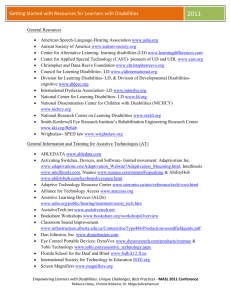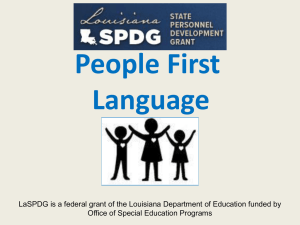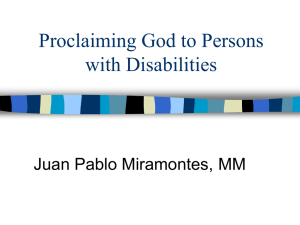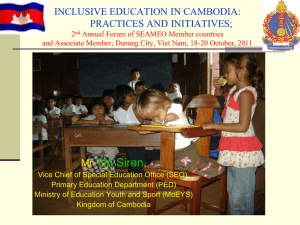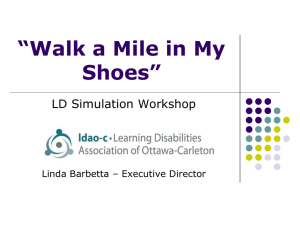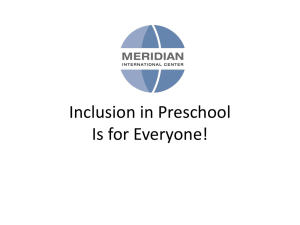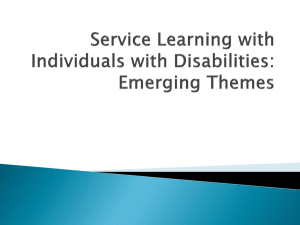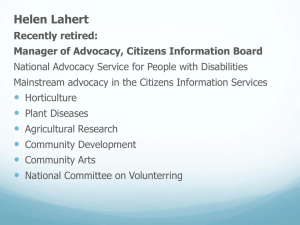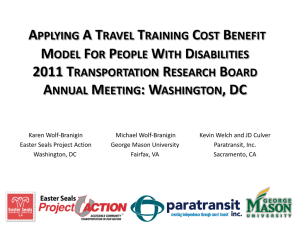susan_moisey_session_9
advertisement
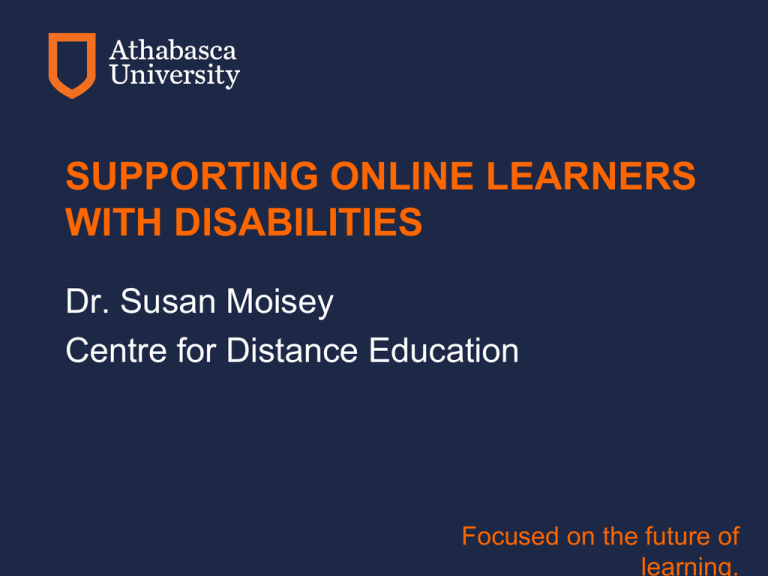
SUPPORTING ONLINE LEARNERS WITH DISABILITIES Dr. Susan Moisey Centre for Distance Education Focused on the future of learning. Athabasca University • Founded in 1970 • Currently 41,000 students from 57 countries • Undergraduate & graduate programs • Individualized and cohort-based learning models Mission Athabasca University, Canada’s Open University, is dedicated to the removal of barriers that restrict access to and success in university-level study and to increasing equality of educational opportunity for adult learners worldwide. We are committed to excellence in teaching, research and scholarship and to being of service to the general public. Supporting Legislation Canadian Charter of Rights & Freedoms – prevents discrimination on basis of race, national/ethnic origin, colour, religion, gender, sexual orientation, age, or mental or physical disability Canadian Human Rights Act – Employers/service providers have a duty to accommodate to ensure equity and avoid discrimination Students with Disabilities Policy Definition: Students with disabilities refer to those individuals who are disadvantaged by reason of any verifiable and persistent physical, learning, cognitive, sensory, psychological, or neurological impairment that may affect their academic progress. * Policy located at: http://ous.athabascau.ca/policy/studentservices/policyforstudentswithdisabilities.htm Learning Services, Access to Students with Disabilities provides … • • • • • • Advice Assessment Advocacy Accommodations Assistive technology Alternate format materials Website: http://asd.athabascau.ca AU Students with Disabilities Approximately 2,000 students with disabilities accessed ASD services in 2013-14 • Course accommodations • Exam accommodations • Assistance with grant applications • Assistance with online learning Type of Disability (%) 7 37 29 27 Physical Learning Psych. Sensory Factors Affecting Online Learners with Disabilities Barriers Facilitating Factors • Inaccessible websites and LMSs • Poor connectivity • Outdated equipment and software • Need to share home computer • Lack of ICT-related skills • Interoperability problems • Reliance on text • Synchronous communication technologies • Flexible study time and place • Portability • Ability to repeatedly access learning resources • Provision of multiple modalities • “Anonymity” • Asynchronous communication technologies • Availability of assistive technology Assistive Technology provides learners with tools for … Reading • Screen readers • Text-to-speech • Text-to-MP3 • Screen masking • Screen magnification Note taking • High lighting • Voice notes Organizing ideas • Concept mapping Writing • Hand writing recognition • Voice dictation • Speech recognition • Word prediction Models of Service Provision for Learners with Disabilities • • • • Intensive counselor support Brief counselor support Self-help Inclusive instructional design Resources • Duty to accommodate students with disabilities in post-secondary educational institutions. Located at http://www.albertahumanrights.ab.ca/publications /bulletins_sheets_booklets/bulletins/duty_to_acco mmodate_students.asp) • The opportunity to succeed: Achieving barrier-free education for students with disabilities. Located at http://www.ohrc.on.ca/en/opportunity-succeedachieving-barrier-free-education-studentsdisabilities • Access for Students with Disabilities website. Located at http://asd/athabascau.ca Contact Dr. Susan Moisey Centre for Distance Education Athabasca University susanh@athabascau.ca



